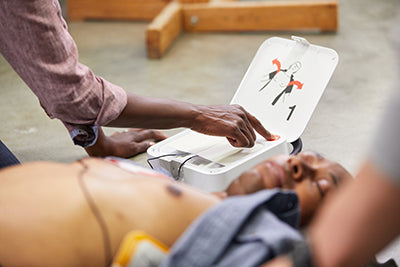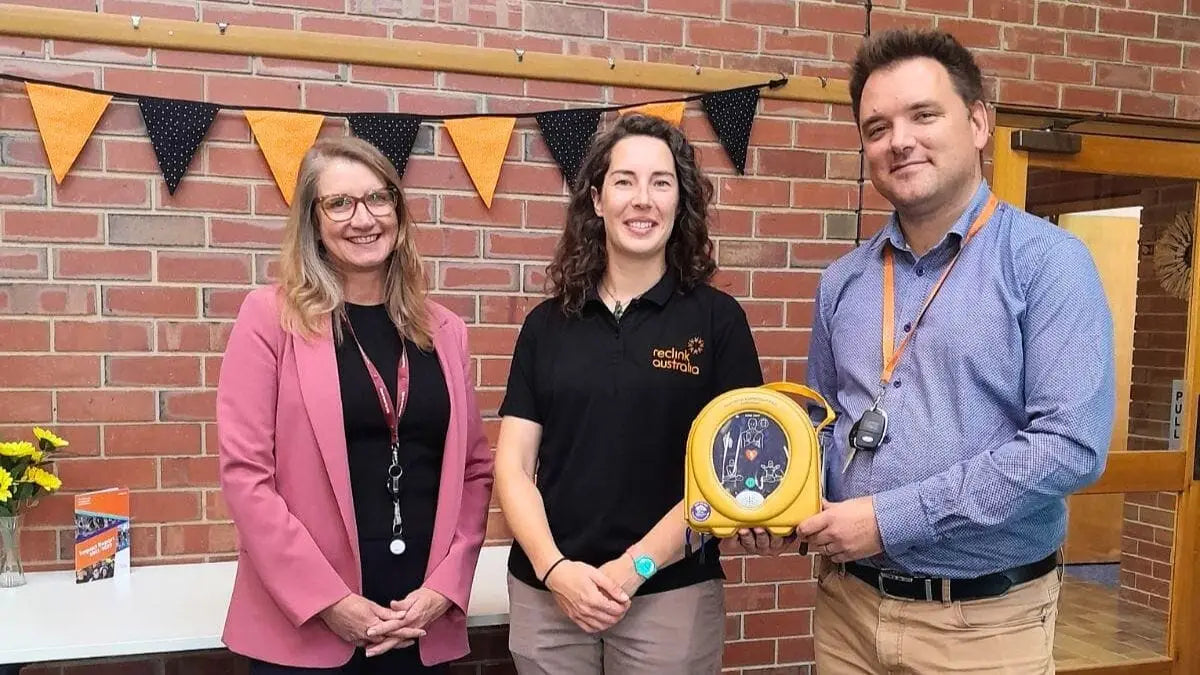Understanding the Impact of Automated External Defibrillators
Sudden cardiac arrest remains one of Canada's leading causes of death, but the increasing availability of AEDs across the country is helping to change these statistics. Let's examine the numbers behind AED deployment and effectiveness in Canada, showing why finding an "AED near me" has become increasingly important.
Survival Statistics and Response Times
The numbers tell a compelling story about AED effectiveness in Canada:
When cardiac arrest occurs, survival rates drop by 7-10% for every minute without defibrillation. However, when an AED is used within the first 3-5 minutes, survival rates can increase dramatically from about 10% to over 70%.
In urban Canadian centers, emergency response times average 8-10 minutes – too long for optimal survival chances without immediate AED intervention. This timing gap highlights why accessible AEDs are crucial for public safety.

AED Deployment Across Canada
Recent statistics show encouraging growth in AED availability:
- Approximately 20,000 publicly accessible AEDs are registered across Canada
- Major cities like Toronto have over 1,500 registered public AEDs
- Schools in Ontario alone have deployed more than 2,500 AEDs
- About 40% of hockey arenas nationwide have installed AEDs
However, experts estimate this represents only about 25% of the optimal coverage needed for adequate public protection.
Cost Impact and Investment
The financial statistics related to AED cost and implementation reveal significant public health investment:
- Average AED price ranges from $1,595 to $2,500 CAD
- Annual maintenance costs average $100-200 per unit
- Total national investment in public AEDs exceeds $50 million
- Healthcare cost savings from successful AED interventions are estimated at $150,000 per save

https://aed.ca/collections/aeds
Training and Certification Statistics
First Aid & CPR/AED certification and training numbers demonstrate growing public awareness:
- Over 100,000 Canadians receive AED training annually
- 60% of trained individuals are workplace first aid responders
- 25% are healthcare professionals
- 15% are concerned citizens and community volunteers.
https://aed.ca/pages/first-aid-registration
Usage and Success Rates
The effectiveness of AEDs vs. CPR alone is clear in the statistics:
- Chance of survival with CPR alone: approximately 5%
- Chance of survival with CPR + AED within 3 minutes: up to 75%
- Public AEDs are used in approximately 30% of out-of-hospital cardiac arrests
- When used, portable AEDs achieve successful defibrillation in 90% of appropriate cases
Provincial Requirements and Coverage
AED requirements vary by province, but deployment statistics show:
- British Columbia: 2,500+ registered AEDs
- Ontario: 5,000+ registered AEDs
- Quebec: 3,000+ registered AEDs
- Alberta: 2,000+ registered AEDs
However, registration rates vary, and actual numbers may be higher as not all AEDs are registered with provincial databases.
Location Distribution
Analysis of AED.ca and other registry data shows where public AEDs are typically located:
- 35% in recreational facilities
- 25% in office buildings
- 20% in shopping centers
- 10% in schools
- 10% in other public spaces
Demographics and Access
Population statistics related to AED access show:
- 70% of Canadians live within a 3-minute walk of a registered AED during business hours
- This number drops to 30% during evening hours
- Rural areas have significantly lower coverage, with only 25% of the population having quick AED access
Future Projections
Based on current trends, experts project:
- 15% annual increase in public AED installations
- 20% increase in First Aid/CPR training rates
- 25% improvement in rural access within 5 years
- 30% increase in registered AEDs nationally
Impact on Public Health
The statistical impact of AED programs in Canada shows:
- 500+ lives saved annually through public AED use
- 2,000+ cardiac arrest interventions where AEDs were applied
- $75 million in estimated healthcare savings
- 35% improvement in cardiac arrest survival rates in areas with good AED coverage

Conclusion
These statistics demonstrate both the progress made in Canadian AED deployment and the work still needed. While urban centers show improving coverage, rural areas require significant improvement. The data clearly supports continued investment in AED infrastructure, training, and public awareness to maximize the life-saving potential of these devices.
For those interested in contributing to these statistics positively, consider getting AED certified or advocating for AED placement in your community. Remember, every new AED installed and every person trained improves the chances of survival for cardiac arrest victims across Canada.
Do you have a questions about AEDs. AED.ca would love to be of assistance! Website aed.ca. Email info@aed.ca or call us at 1 (833) HAVE AED (1-833-428-3233)






